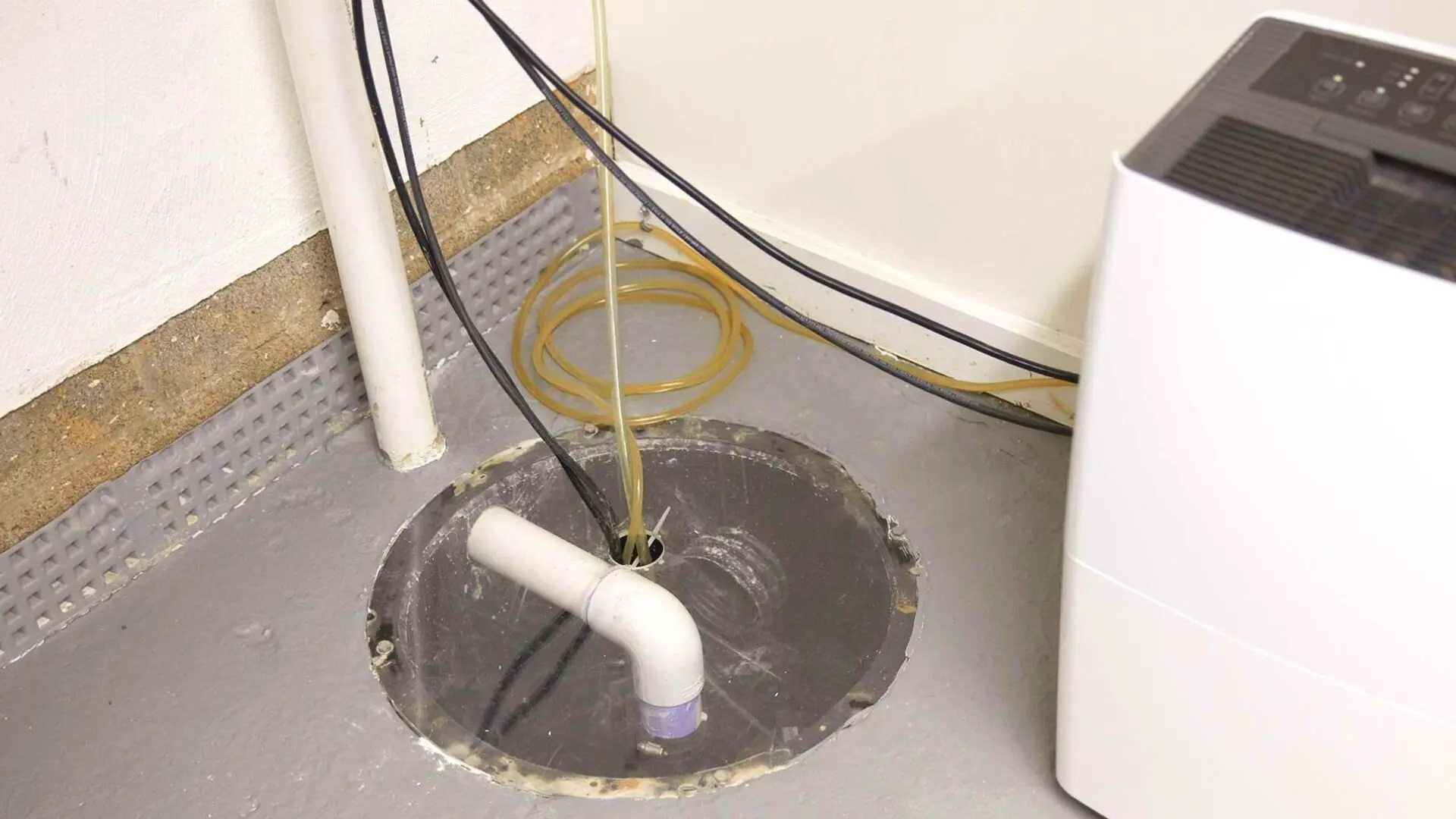Helpful Techniques for Caring for Your Sump Pump
Helpful Techniques for Caring for Your Sump Pump
Blog Article
We have found this great article on Cleaning & Maintenance Tips for Your Home's Sump Pump below on the internet and felt it made good sense to talk about it with you over here.

Sump pumps are important elements in several homes, specifically in areas prone to flooding or too much dampness. They assist avoid water damages by successfully eliminating excess water from basements or crawl spaces. However, like any other appliance, sump pumps need regular maintenance to guarantee they operate properly when needed the most. Cleaning your sump pump is a vital part of its maintenance, and understanding how to do it correctly can save you from pricey repair services and potential disasters.
Introduction
Maintaining a tidy sump pump is essential for its proper functioning and durability. Disregarding this important job can lead to obstructions, malfunctions, and inevitably, water damage to your home. Consequently, discovering how to clean up a sump pump is essential for homeowners that depend on these tools to maintain their cellars completely dry and safeguarded.
Indicators of a Dirty Sump Pump
Recognizing when your sump pump needs cleaning is vital for preventing prospective malfunctions. Some usual indicators that show a filthy sump pump include weird noises throughout operation, reduced water circulation, and noticeable debris in the pit. If you notice any of these symptoms, it's vital to cleanse your sump pump immediately to avoid any more problems.
Preparing for Cleansing
Before you start cleansing your sump pump, it's necessary to take some safety preventative measures. Start by shutting down the power to the pump to prevent any electrical mishaps. Furthermore, wear suitable safety gear, such as gloves and goggles, to shield yourself from dust, debris, and possible pathogens.
Comprehending the Sump Pump
Prior to diving into the cleansing procedure, it's essential to have a fundamental understanding of exactly how a sump pump works. Usually mounted in a pit or container below the basement floor, a sump pump includes numerous crucial parts, including a pump, a float button, and a discharge pipe. When water collects in the pit, the float button turns on the pump, which then pumps the water out via the discharge pipe, far from the building's foundation.
Detailed Guide to Cleaning a Sump Pump
Turning off the Power
Begin by disconnecting the power supply to the sump pump to prevent any crashes while cleaning.
Looking For Appropriate Functioning
Prior to reinstalling the pump, carry out a quick examination to ensure that the float button turns on the pump appropriately. Put some water right into the sump pit and observe the pump's operation. If whatever is functioning correctly, you can reassemble the pump and reconnect the power supply.
Eliminating Debris and Dirt
Make use of a container or an inside story to eliminate any type of noticeable debris, dirt, or sediment from the sump pit. Dispose of the debris effectively to prevent it from obstructing the pump or the discharge pipeline.
Cleaning up the Pump and Float Change
Once the pit is free from particles, meticulously get rid of the pump from the pit. Examine the pump and the float switch for any signs of damage or wear. Make use of a soft brush or cloth to clean up the surfaces and remove any kind of accumulated grime.
Flushing the System
After cleaning up the pump and float button, flush the sump pit with clean water to get rid of any kind of staying dust or debris. This will help make sure that the pump operates smoothly and effectively.
Upkeep Tips to Maintain Your Sump Pump Clean
In addition to regular cleaning, there are a number of upkeep tips you can follow to keep your sump pump in optimal condition:
Final thought
Cleansing your sump pump is an essential element of its maintenance and guarantees that it operates efficiently when you require it the most. By adhering to the steps outlined in this overview and incorporating normal maintenance right into your routine, you can prolong the life expectancy of your sump pump and secure your home from water damage.
6 STEPS ON HOW TO CLEAN A SUMP PUMP PROPERLY
UNDERSTANDING SUMP PUMPS
Your sump pump plays a crucial role in protecting your home by managing and removing excess water. It primarily functions as a “shield”, guarding your basement against the damaging effects of water accumulation. The pump is housed in a sump pit in the lowest part of your basement, and its job is to pump out any water that collects there.
During heavy rainfalls or when snow melts rapidly, water can infiltrate your basement, posing potential risks like flooding, structural damage, and harmful mold growth. Here, the sump pump springs into action, pumping out the intruding water and directing it away from your home.
SAFETY FIRST
Before cleaning, remember to prioritize safety. Disconnect the sump pump from the power source to prevent any accidental electric shocks. Also, wear sturdy gloves to protect your hands from any sharp or dirty components within the pump.
REMOVE THE SUMP PUMP
After ensuring your safety, the next step is to remove the sump pump from its pit. Doing this might require careful maneuvering as you don’t want to damage any pump components. Once removed, clean the sump pit to remove any accumulated debris or sludge.
INSPECT THE PUMP
Inspect the pump for any visible signs of wear or damage. Check the power cord, float switch, and impeller housing. If any components look worn out or damaged, consider replacing them to ensure optimal performance.
CLEAN THE PUMP
Thoroughly clean the pump with warm, soapy water. Make sure to rid it of any dirt, gravel, or other debris that might impede its performance. You can use a toothbrush to clean the small, hard-to-reach parts of the pump.
REINSTALL THE SUMP PUMP
Reinstall the pump into the sump pit Make sure it’s positioned correctly to remove the water effectively Once it’s back in place, reconnect it to the power source TEST THE PUMP
Finally, pour some water into the pit to ensure the pump works correctly. It should start automatically and begin pumping out the water; if it doesn’t, check the power source and the positioning of the pump.
Remember, while cleaning your sump pump is an essential part of home maintenance, hiring a professional plumber for a thorough inspection and cleaning at least once a year is also important. This will ensure that your pump is in optimal condition, ready to protect your home from potential water damage.
BEST PRACTICES FOR CLEANING SUMP PUMP DISCHARGE PIPES
Regular Inspection: Regularly inspect your discharge pipes, especially during heavy rainfall or snowmelt periods. Look for any signs of blockage or damage. Early detection of problems can prevent serious issues down the line. Periodic Cleaning: Over time, sediment and debris can accumulate in the discharge pipes, impeding the flow of water. Regular cleaning helps keep the pipes clear and functioning efficiently. You can use a high-pressure water jet to effectively clean the pipes. Insulation During Winter: In colder climates, discharge pipes can freeze, blocking the outflow of water. Protect your discharge pipes from freezing temperatures by insulating them with foam pipe insulation. This will ensure the sump pump can continue to discharge water even in freezing conditions. Proper Positioning: The discharge pipe should be positioned to direct water away from your home’s foundation. Improper positioning can lead to water seeping back into the basement. Ensure the pipe is long enough and angled correctly. Installation of a Check Valve: A check valve prevents water from flowing back into your sump pit after the pump has pushed it out. Installing a check valve helps maintain the efficiency of your sump pump and reduces the risk of flooding. Minimize Pipe Turns: Every curve or turn in the discharge pipe can decrease the efficiency of water flow. By minimizing turns and bends in your discharge pipe, you can increase the efficiency of your sump pump. https://www.fullspeedplumbing.com/how-to-clean-a-sump-pump-properly9999/

We had been shown that write-up about Steps to Cleaning Your Sump Pump Properly from a good friend on a different domain. If you enjoyed our blog entry please be sure to pass it around. I am grateful for your time. Return soon.
Schedule Appointment Now Report this page